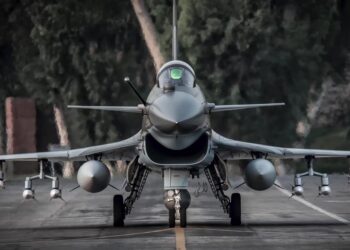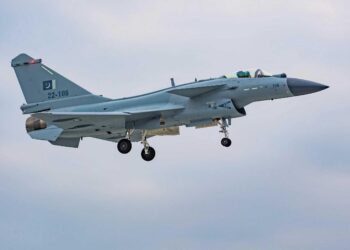Forecast International, NEWTOWN, Conn: Overall defense spending has skyrocketed in recent years, both in dollar terms and relative to the size of the economy. The spending surge of the past few years can largely be attributed to soaring war costs, which have most recently run upwards of $15 billion per month.
While there is a common perception that the huge costs of defense spending should begin tapering off, the fact is that baseline budgets are still on the rise, with FY09’s $515 billion request for discretionary spending being the largest yet. In fact, when all defense-related costs are considered, the FY09 defense budget may represent close to 5 percent of GDP.
These are among the findings of a recent defense budget review by the Budget Forecasting team of Connecticut-based Forecast International, which is currently finalizing its FY09-FY14 budget projections. These projections are contained within the company’s U.S. Defense Budget Forecast Market Intelligence Service.
Over and above the requested $515 billion for FY09 baseline budget authority, the President has requested an initial $70 billion in supplemental funding to support war efforts in Iraq and Afghanistan, and the Pentagon is expected to seek upwards of $100 billion more later this year.
Additionally, the major military services have outlined approximately $30 billion in requirements that are not supported in the President’s FY09 budget. Although they are not requests from a technical standpoint, lawmakers use these lists of unfunded requirements to guide their fiscal decisions over the course of the budget process.
Unfunded needs in FY09 include several “big-ticket” items, including a tenth LPD-17 amphibious transport dock ($1.7 billion), 15 C-17 transport aircraft ($3.9 billion), and four F-22 fighters ($600 million).
These unfunded needs put pressure on Congress to retool dozens of line items throughout the budget process, which can subsequently impact topline R1 and P1 spending by billions of dollars each year.
Another primary concern of military officials and government leaders is the tremendous cost growth spreading throughout the DoD’s acquisition infrastructure. The Pentagon, however, is apprehensive about forecasting severe budget cuts or even program cancellations. Can the Air Force afford all 1,763 F-35 Joint Strike Fighters it plans to buy? Will the Navy’s DDG-1000 destroyer survive past the first two lead ships? While driven to modernize its wide array of weapons systems, the U.S. military finds itself bogged down in an environment of political uncertainties and burgeoning tensions in the Middle East.
These are just some of the variables that FI’s team will be taking into careful consideration over the next couple of months as it employs a line-by-line approach to projecting the finalized budgets. Over the past five years, FI’s average margin of error in estimating authorized spending levels in RDT&E and procurement accounts – some 1,900 line items – has been 1.9 percent.
Based in Newtown, Conn., USA, Forecast International specializes in long-range industry forecasts and market assessments used by strategic planners, marketing professionals, military organizations, and governments worldwide.
Trump announces ‘full and immediate’ India-Pakistan ceasefire
US President Donald Trump on Saturday announced a ceasefire agreement between India and Pakistan after days of deadly jet fighter,...









